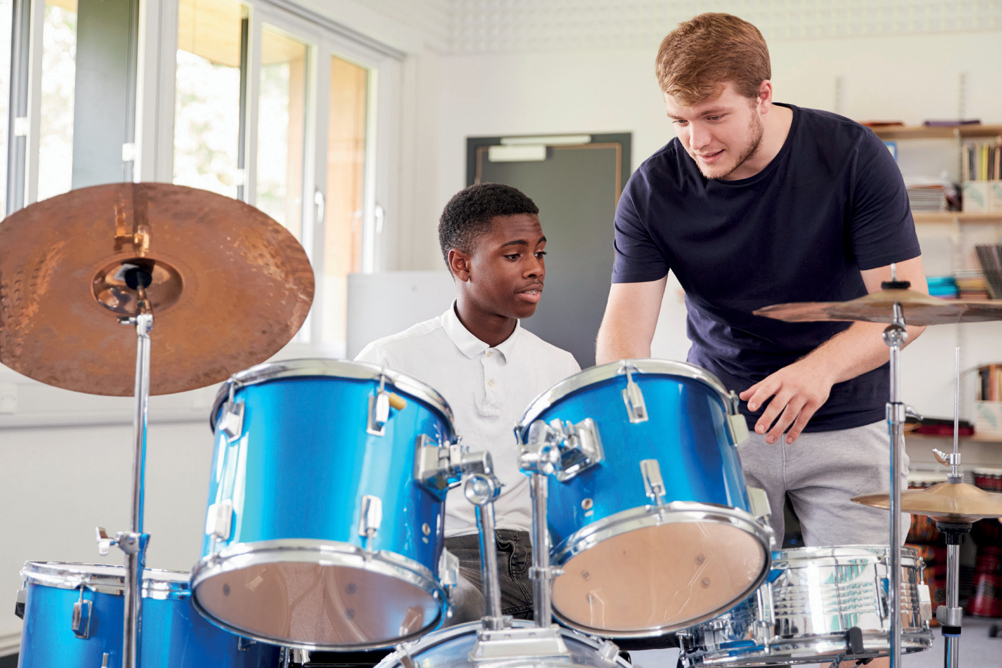
Learning an instrument today looks completely different from just a decade ago. Thanks to the internet, picking up new skills isn't limited by where you live or how much time you have. For aspiring drummers, YouTube is the ultimate starting point. Search ‘how to play a rock beat’ and you'll be hit with thousands of videos (of varying quality) all ready and waiting to teach you something, for free.
So, it makes sense that more and more students are using YouTube not just as a supplement, but as their entire drum education. And why not? It's flexible, fast, and easy. But here's the question: can YouTube replace a drum teacher?
Let's unpack the argument on both sides, and explore how combining the two could end up being the best way forward.
YouTube: a tool for the masses
I'll give credit where it's due: YouTube is an amazing tool. The sheer volume and variety of content is mind-blowing: grooves, advanced fills, rudiments, you've got it; and you can pause, rewind, slow down, or repeat a section until it clicks. For visual learners or those who like learning at their own pace, it's a goldmine.
Plus, it enables exploring different coaching styles. One drummer might explain a concept in a way that suddenly makes sense after hearing it explained five other ways. Students are also exposed to a vast variety of genres and techniques – something potentially not possible if they're only working with one teacher.
And, of course, it's free. That's a huge deal, especially for those who can't afford today's options for music tuition – which is typically private and expensive.
… but it's not without its flaws
The biggest issue? Lack of structure. It's easy to go down a rabbit hole of flashy fills or cool tricks without the core foundation. Students become expert at emulating, but without a plan they'll miss the key building blocks that make you a well-rounded drummer.
Then there's the feedback problem. YouTube can show them how something should sound or look – but can it tell them they're doing it right? Are their hands too tight? Are they leaning too far forward? What about timing? Without a teacher there to watch and correct in real time, it's easy for bad habits to stick.
Also, motivation can be a hurdle. Learning drums takes time, repetition, and patience. Without someone to encourage, to hold a student accountable, or even just be a cheerleader, it's not uncommon to lose steam or to plateau.
Where a drum teacher shines
This cheerleading is where a live teacher really makes a difference. A good drum teacher brings something to the table that no video ever can: personal, real-time feedback. They can catch mistakes early, tweak technique, and help progress in a logical, step-by-step way. Students are then not just learning cool stuff – they're learning how to learn, which is also crucial.
Teachers also provide structure. Whether it's rudiments, reading, coordination or groove development, they know how to build a lesson plan that fits the student. They adapt as things grow. Struggling with ghost notes? Let's work on that. Picking things up quickly? Let's push further.
And let's not forget the human side. A teacher isn't just an instructor – they're a coach, a mentor. They help students set goals, stay inspired and connect with a bigger musical world, whether it's performance opportunities, jam sessions, or someone to chew things over with.
So is there a world where they can coexist?
Rather than thinking in terms of one versus the other, we could see YouTube and drum teachers as two parts of the same ecosystem. Used together, they can massively enhance the overall learning experience.
Many teachers today already recommend specific videos or online resources to their students. It's a great way to reinforce lessons, provide extra practice, or dive deeper into a topic outside class time. YouTube, in this case, becomes an extension of the learning, not a replacement.
And from the student's side, it's a great way to take more ownership of their progress. They can explore what interests them online, then bring questions, discoveries or challenges into their lesson, just like I used to as a millenial student with the latest CD. Actively engaging with content, instead of passively consuming it – that's where real growth happens.
The best of both worlds
YouTube has completely changed the game when it comes to music education. It offers exposure, inspiration and accessibility like never before. But it can't do everything. Without structure, feedback and guidance, it's easy to get lost or stuck.
A teacher fills in those gaps, offering clarity, support, and direction. But even they can benefit from the endless resources available online. When you bring the two together – using YouTube to fuel curiosity and a teacher for guidance – everyone can be set up for success.
In the end, it's not about choosing sides; it's about learning in a way that actually works. And more often than not, that means mixing the best of both worlds.




